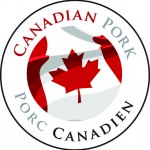International Roundup – Pork features well in environmental survey
Posted in: Economics, Environment, Meat Quality by admin on July 14, 2011 | No Comments
European retail chains are requesting more documentation regarding the environmental aspects of the products they purchase. Especially in the UK, the terms “food miles” and “carbon footprint” are gaining in popularity. The agricultural faculty of the University of Aarhus in Denmark recently carried out a life cycle analysis of pork from Denmark, the Netherlands and the UK on behalf of the Danish Meat Association.
The term “Food Miles” means the amount of greenhouse gas emissions (g CO2) during the transport of foodstuffs from the producer to the consumer. “Carbon Footprint” refers to the entire life cycle of a product and its greenhouse gas emissions. This term covers the entire value chain.
In the calculation of greenhouse gas emissions, the soybean crop growing in Argentina, the feed production in Denmark and the entire pig production chain including fertiliser production, slaughtering and meat dispatch was included. Through adding all emission values, a realistic value of greenhouse emissions can be calculated per kilo of pork.
According to the life cycle analysis, 1kg pork contributes 3.6kg CO2 equivalents to global warming. As a comparison, replacing a normal 60-watt lamp with an energy saving lamp burning for an hour provides a yearly reduction of 13kg of greenhouse emissions. Transporting by truck to Munich or by ship to Tokyo, the amount increases to 3.7-3.8kg CO2 equivalents per kg pork. This indicates that “Food Miles” do not have much of an environmental effect and represent less than 1% of the entire emissions in the production chain.
The study revealed no large differences between Danish, Dutch and British greenhouse gas emissions for pork.
$1.4 million to promote Canadian Pork as imports soar
Posted in: Economics, Meat Quality by admin on July 12, 2011 | No Comments

 Soaring pork imports – estimated to be 25% higher in 2008 – have heightened the need for more consumer awareness of the origin of the pork that they purchase. Pork Marketing Canada (PMC) recently announced that it had obtained funding of almost $1.4 million for its Canadian Pork initiative, which is aimed at increasing sales of Canadian pork. A new “Canadian Pork” label will be used to identify the product in participating grocery stores.
Soaring pork imports – estimated to be 25% higher in 2008 – have heightened the need for more consumer awareness of the origin of the pork that they purchase. Pork Marketing Canada (PMC) recently announced that it had obtained funding of almost $1.4 million for its Canadian Pork initiative, which is aimed at increasing sales of Canadian pork. A new “Canadian Pork” label will be used to identify the product in participating grocery stores.
“Shoppers now have the choice to choose Canadian,” says Roy Kruse, Manager of Pork Marketing Canada. “Until this label, consumers didn’t know whether or not the pork they found at their local meat counter was imported or Canadian. The new label gives them the opportunity to identify and choose Canadian pork over imports.”
The PMC initiative is supported by studies that show Canadian consumers will choose Canadian products over imports if given the choice. “Canadians want high-quality foods that are safe and produced under environmentally sustainable practices”, notes Kruse. “More and more, they want to buy Canadian.” A study by the Canadian Federation of Agriculture found that 90% of Canadian consumers felt Canadian-grown product should be easily identifiable in stores. Further, 95% of consumers would prefer to buy Canadian-grown product that is competitively priced.
These findings are consistent with an Agriculture and Agri-Food Canada study that found the quality of food produced in Canada is viewed as better than food produced in other countries. Canadian consumers continue to believe that Canada has better production practices and standards and more rules and regulations than other countries. “Not surprisingly, the demand for local food continues to rise,” explains Kruse. “With heightened concerns for the environment and an increasing focus on food safety, people are more interested than ever in the food on their plate.”
In western Canada, participating stores initially include Save On Foods, Overwaitee and Safeway. “It is hoped more retailers will come on board as time goes on,” says Kruse. Also, some Maple Leaf Foods fresh pork products will be labelled Canadian in retail stores where Maple Leaf Foods fresh pork products are carried. Labels will be on fresh pork products from early April onwards. “The assumption is that consumers will choose Canadian product over other options if pork is clearly labelled,” Kruse believes.
The labelling initiative will be supported by an ongoing media campaign to improve consumer awareness. “This campaign is about people as much as it is about pork,” says Kruse. “The campaign will focus on the positive aspects of Canadian pork producers, their high quality product and their contribution to Canadian society and its economy.”
Pork Marketing Canada expects the “Canadian Pork” label campaign to help boost sales of Canadian pork and help to mitigate some of the financial issues faced by the industry.
Pork Marketing Canada is a national marketing initiative of provincial pork organizations across Canada. The purpose of this alliance is to increase the consumption of Canadian pork by partnering with packers, processors, retailers and food service distributors and operators. Pork Marketing Canada offers expertise, information and funding towards programs that promote pork, and further develop sales. For more information, visit www.putporkonyourfork.com
Effects of Farm Handling on Physiological Responses, Losses and Meat Quality of Commercial Pigs
Posted in: Meat Quality, Pork Insight Articles, Welfare by admin on May 6, 2011 | No Comments
Stressful transport to the slaughterhouse can result in more mortalities, an increase in non-ambulatory pigs, more condemned carcasses, and poorer meat quality. By decreasing the stress during transport there will be less economic loss, higher meat quality, and better animal welfare. Feed withdrawal before transport helps by reducing fatigue during transfer, making handling easier, lessening transport sickness, reducing carcass contamination, and improving meat quality (from increased pH). In older farm facilities corridors would have been designed for a lighter pig, and given that pig size has increased they may be too narrow for current pigs. This can lead to increased stress in loading, and increased injury. The use of electric prods has been shown to increase the heart rate of pigs throughout the transport, resulting in higher stress and more mortalities. Programs encouraging transporters to slow down, and hydraulic lifts are two final ways to reduce stress during transport. Using these strategies the stress during transport can be reduced, and economic losses minimized.
Achieving Export Quality Pork
Posted in: Meat Quality by admin on May 2, 2011 | No Comments
Over 60% of Canadian pork is exported, and to maintain or increase the consumer demand in other countries Canadian producers need to provide a high quality product. However, quality is a somewhat subjective quality when described by consumers. Food safety is considered a minimum requirement, and quality is more often described by the meat colour, fat cover, marbling, and drip before purchase. After purchase, meat taste and tenderness are used to gauge quality. Understanding the market is important because there is a variety in preference on whether marbling is wanted, what fat content, and how dark the meat is. Most often light red, low fat, tender, and tasty pork is desirable. By enhancing these traits Canadian exports can maintain demand, but it could be beneficial for both exports and domestic sales to develop a product that is uniquely Canadian.
Branding Canadian Pork – Defining Consumer Wants
Posted in: Economics, Meat Quality, Pork Insight Articles by admin on March 30, 2011 | No Comments
Brand identity can help garner customer loyalty, but also has an economic impact through increased revenue and market shares, and decreased price sensitivity. A clear image around a product helps to create a brand. Canadian Pork can become a brand for global and domestic consumers. The chicken and beef industries have managed to create brands of their own: chicken through superior air-chilled products, and beef through premium graded beef. Pork can become branded through a grading system, and features like colour and marbling. Branding marbling as a better tasting product with naturally occurring fat can make it a premium product, but having premium lean products as well could be achieved through a two-tier classification system.
Quality Meat Packers’ Brand Stories
Posted in: Meat Quality, Pork Insight Articles by admin on | No Comments
Quality Meat Packers has established 4 unique brands that are able to remain competitive in the market. Walking Tree Pork sells fresh pork in Japan, and uses purity and strict food safety as a selling point. The 2nd and 3rd brands are sold at Loblaws: one is Free From pork and the other Nature’s Own. Free From avoids antibiotics and animal products in their feed, and Nature’s Own is processed meats that use pork from the Free From system. Lastly, Legacy Fresh Pork provides quality, seasoned, ready to cook products.
Value-Added Pork Production: What Strategies are Working Today?
Posted in: Meat Quality, Pork Insight Articles by admin on | No Comments
The Pork Niche Market Working Group offers support to producers in niche markets, and helps explain the challenges and opportunities of the niche market. A business that goes into a niche market has to consider more than just producing the pork. Some of the other considerations include processing, customers, transportation, inventories, finances, consistent supply, personnel, and business partners. Many attempts at the niche market fail, but two successful businesses are Niman Ranch and Eden Farms. Niman Ranch focuses on animal welfare and their story, while Eden Farms focuses on quality and using Berkshire hogs. Future possibilities for niche markets include heritage breeds, bedded farrowing pens, hogs on specialty diets, local or organic products, and value-chains.
Willowgrove Hill DHA/EPA Omega-3 Pork Marketing
Posted in: Meat Quality, Pork Insight Articles by admin on | No Comments
Willowgrove Hill produces Omega-3 enriched hogs to provide more nutritious options to consumers. They are the only pork product that is a functional food – a food with disease prevention or health promoting properties. Their ultimate objectives are to make their product desirable, sustainable, superior, and scalable. Willowgrove Hill enriches their pork with EPA and DHA omega-3s and Selnium through the swine feed, and the diets are also antibiotic free. The marketing and pricing turned into the most challenging aspect of putting a new product on the market. Some of the keys to marketing the product were to listen to experts, become credible, marketing to the right area (demographic), and make contacts. Later issues around packaging, processing, using Federal kill plants, POS issues, and further pricing issues also had to be tackled.
Changing Their Model: the Iowa Food Cooperative
Posted in: Meat Quality, Pork Insight Articles by admin on | No Comments
The Iowa Food Cooperative connects consumers and producers directly, and either can be a member. Customers use a software program to choose products, and then producers deliver the products to a store where they can be picked up. There are a variety of products available, all of which are made by the producer, and producers set their own prices. The system allows consumers to get the fresh, local products they want and producers to sell what they have available at a fair price.
Selling Pigs to Market Pork
Posted in: Meat Quality, Pork Insight Articles by admin on | No Comments
The Whole Pig Company delivers ¼, ½, or whole pigs to market pork to consumers as a healthy, quality, and delicious protein source. They strive to inform customers how to prepare pork, and why it is a nutritious choice. The small business uses various promotion and sample give-aways to amplify the company’s market presence. Networking and packaging that helps to sell the product remain important for their success.









